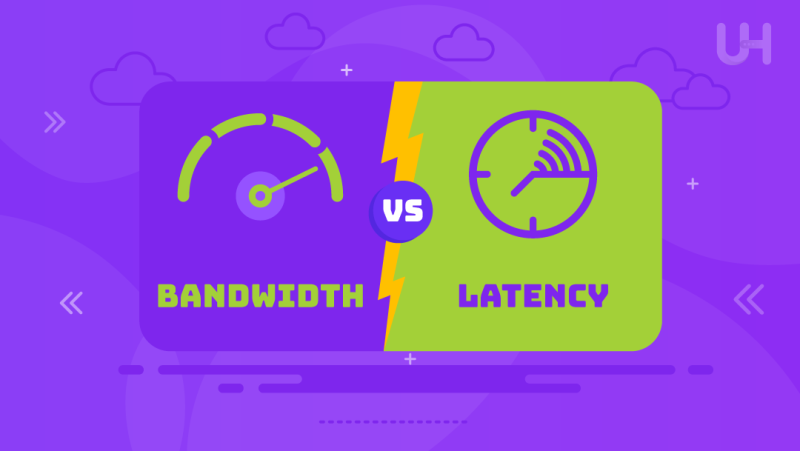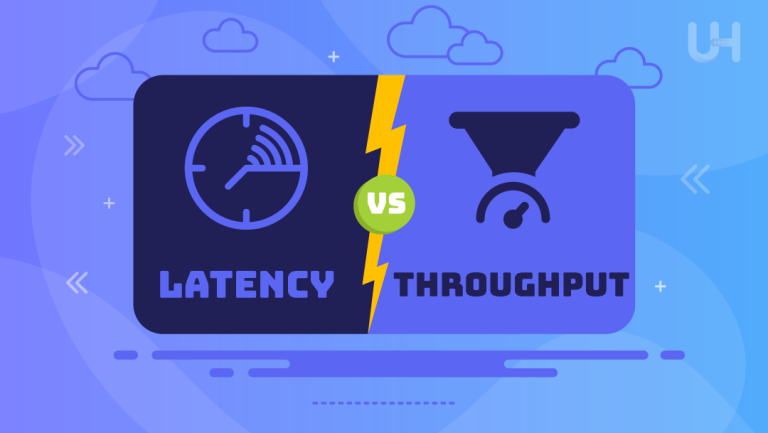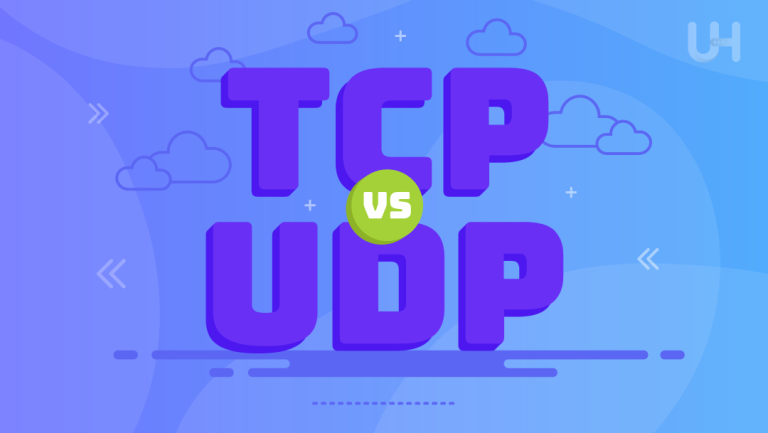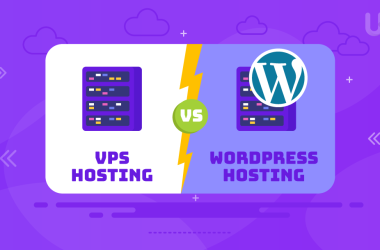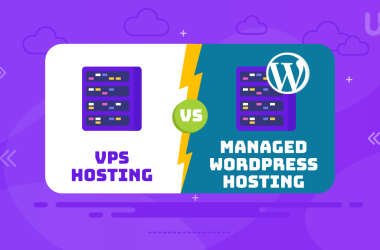Any network has two most important factors governing its performance: bandwidth vs latency. While the terms are often used together, they refer to different facets of how data travels over a network. Knowing the difference between bandwidth and latency thus is necessary when it comes to optimizing internet speed and network efficiency.
In this blog, we’ll explain these two concepts, showing their role, how they are measured, and how they affect your online experience. By the end of this article, you will clearly understand latency vs bandwidth, their differences, and their importance in everyday browsing and high-performance applications. Let’s dive in!
Defining Bandwidth
The bandwidth is the amount of information that a channel can transmit in a standard unit of time, usually a second, measured by Mbps. or Gbps. Similar to a highway, whose width determines how many cars travel simultaneously, bandwidth can be thought of as the width or the throughput of the network over which information flows.
Higher bandwidth allows more data to flow at once, meaning quicker downloads and smoother streaming. However, this does not directly guarantee speed since other factors, such as network congestion and latency, are equally important in record performance.
Defining Latency
Latency is the time that elapses when data are being transmitted over a network between the source of the data and its intended destination. Unlike the term ‘bandwidth,’ which describes capacity, latency describes delay or lag. It’s normally measured in milliseconds, and clearly, the lower the latency, the sooner everything responds. For example, when clicking on something, the latency is long. It takes longer for even the instant server to respond.
High latency will introduce noticeable delays, making applications requiring video calls or online gaming extremely frustrating. While bandwidth dictates the amount or volume of data, latency defines how fast that data reaches its destination. Therefore, it is far more critical when considering real-time applications and seamless user experience.
Bandwidth vs Speed
Mostly, people tend to equate bandwidth with speed, though they are not the same. Bandwidth refers to the maximum volume of data a network connection can hold, while speed measures the rate at which data flows. Simplifying this, bandwidth is how wide your highway is, and speed is how fast those cars travel on that highway.
However, other factors, such as latency and network congestion, affect speed. Even with high bandwidth, the overall speed will still be affected when the latency is high or the network is overloaded.
Latency and Delay
The terms latency and delay are sometimes used almost interchangeably, but rightly, they refer to something slightly different. Latency generally refers to the time it takes for data to travel from one point in the network to another while adhering to data privacy rules. It is usually measured in milliseconds and is the most important factor in determining the responsiveness of any given network. The lower the latency, the faster the response times become critical in real-world events such as video conferencing and online gaming with lower bounce rates.
On the contrary, delay is a product of latency but may be contributed by other factors such as network congestion and routing. Additionally, distance plays a critical role in latency, which refers to the time that it takes for data to travel. Delays can be built upon this because of outside conditions that make it even worse for the user.
Measuring Bandwidth
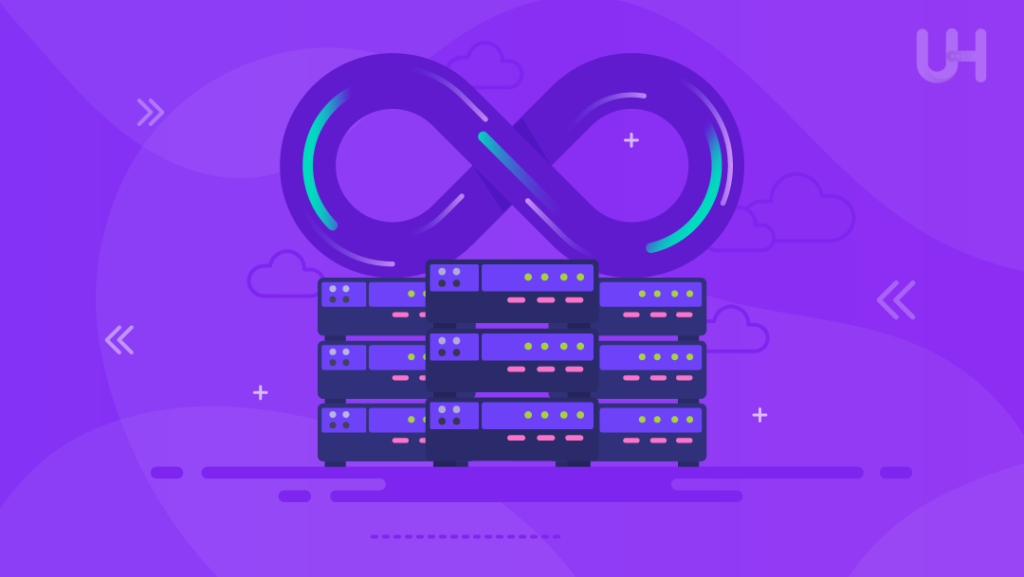
Bandwidth is usually measured to determine the maximum rate of data transfer across a network connection, normally in either Mbps or Gbps. Often, bandwidth tests are conducted through online tools by sending and receiving data between the device and the storage server. It calculates the time it takes and the amount of data that passes through.
The tests measure download and upload speeds. Download speed refers to the rate at which data is received, while upload speed refers to the speed of data sent. Greater bandwidth means the ability to handle more data at one time, which in itself speaks to better overall performance.
Achieve Lightning-Fast Performance with Our Fast VPS!
For a superior online experience, choose Fast VPS hosting. High bandwidth and low latency ensure rapid data transfer and quick response times. This makes it ideal for demanding applications and enhancing overall performance.
Latency Measurement Basics
- Ping Test: In most basic terms, a measure of latency involves sending a small packet of data to the server and measuring in milliseconds the time it takes to get a response. Lower ping times reflect lower latency.
- Round-Trip Time (RTT): RTT is the total time required for a signal to travel from source to destination and vice versa; thus, it gives a clear overview of network latency.
- Jitter: This is the term for inconsistencies in latency over a period. The higher the jitter, the more inconsistencies one is likely to have in things like video calls or gaming.
- Traceroute: This traces the path taken by packets of data over multiple servers. It is achieved by identifying where latency or slowing of speed occurs in travel.
Impact on Performance
Both bandwidth vs latency, each of which relates to different sides of your online experience, are the most determining factors for the performance of a network. With high bandwidth, one can shift a large amount of data in less time, hence enabling fast downloads, speedy video streaming, and seamless file sharing. However, even if bandwidth is high, high latency can delay users and make slow responses for all activities that require real-time interaction, like online gaming or video conferencing.
Low latency is crucial for real-time applications that need immediate feedback. Video calls, live online streaming, and online gaming are good examples. Take into account the nature of fast data exchange in these examples. If the latency is high, it comes along with lags, buffering, and poor synchronization to unleash a detrimental impact on performance.
High Bandwidth Examples
- 4K Video Streaming: Ultra high-definition video streaming at 4K resolution requires very high bandwidth operations. It is especially on platforms like Netflix or YouTube, where fluid playback without buffering requires this.
- Large-file downloads: These download large files, such as updates of software or high-resolution media files, at high bandwidths for quicker transfers and reduced wait times.
- Synchronization with Cloud Storage: Cloud storage platforms like Google Drive or Dropbox require large bandwidth to sync large amounts of data by uploading and downloading to them.
- Connection of Devices: In this case, high bandwidth is utilized when numerous devices, such as smartphones, laptops, and smart TVs, are on the same network within a home or office.
Low Latency Applications
Low latency is crucial in applications requiring real-time responsiveness and quick data exchange. Online gaming, for instance, involves smooth gameplay, which requires low latency. Small fractions of a second in latency can make a difference in the play’s performance and the user experience.
Applications include low-latency video conferencing tools. Zoom and Microsoft Teams, for example, rely on low latency to provide real-time audio and video communication. This ensures there are no visible delays or interruptions. Other key examples are financial trading platforms. Low latency allows trades to be executed in milliseconds, maximizing the benefit from market changes. Autonomous vehicles and smart IoT devices also depend on low latency. It enables them to communicate and respond in real time, ensuring both safety and efficiency.
Factors Affecting Bandwidth
- Network Congestion: Too many users or devices on a network simultaneously can decrease the bandwidth, slowing down the speed of data transmission and thereby disturbing performance.
- Hardware Limitations: The quality and size of routers, modems, and cables used can limit the maximum bandwidth a network can handle, hence affecting the overall data transfer rates.
- Distance from Server: It is because the farther away one is from the server to which he or she connects, the unlimited bandwidth might be affected since this usually takes longer to travel the data; hence, inefficiency results.
- Network Protocols: Some network configurations or protocols, such as TCP/IP configuration and setup, affect how bandwidth is effectively utilized during transmission.
Bandwidth vs Latency: Comparison Table
Here’s a simple comparison table highlighting the differences between bandwidth and latency:
| Aspect | Bandwidth | Latency |
| Definition | The maximum amount of data that can be transferred in a given time period, typically measured in Mbps or Gbps. | The time it takes for data to travel from its source to its destination, usually measured in milliseconds (ms). |
| Measurement | Megabits per second (Mbps) or Gigabits per second (Gbps). | Measured in milliseconds (ms). |
| Impact | Determines how much data can be transferred at once. | Determines the delay in data transfer (response time). |
| Effect on Speed | Higher bandwidth allows more data to be transferred quickly, but doesn’t directly affect responsiveness. | Lower latency improves responsiveness and reduces lag. |
| Ideal Scenario | High bandwidth is ideal for activities like large file downloads, streaming, and multi-device usage. | Low latency is crucial for real-time applications like online gaming, video conferencing, and financial trading. |
| Common Issues | Network congestion, hardware limitations, or distance from the server can reduce bandwidth efficiency. | Long distances, network congestion, and poor routing can increase latency. |
| Applications | Streaming 4K videos, downloading large files, cloud storage synchronization. | Online gaming, video conferencing, financial trading. |
This comparison captures the key differences and uses of bandwidth and latency.
Conclusion
Knowing how bandwidth differs from latency will help you further fine-tune your network performance. Bandwidth gives you the capacity for transmitting data, while latency decides the speed at which it travels across the network. Both are major variables in your online experience, especially for real-time applications. Considering this, the best performance will involve a mixture of high bandwidth. It deals with bulks of information and low latency, which minimizes delays.
For optimal performance, consider UltaHost’s Cloudflare VPS. It enhances website speed by reducing latency and improving bandwidth efficiency, ensuring a seamless user experience. It is perfect for businesses looking to boost their online presence.
FAQ
How does bandwidth differ from latency?
Bandwidth defines a network’s theoretical maximum data transfer rate, while latency is the time it takes for a chunk of data to get from its source to its destination.
How does high bandwidth influence the internet’s speed?
Higher bandwidth will allow more data to be sent at once, equating to faster downloads and less jerky streaming.
What are the possible causes of high latency?
High latency can be induced by network congestion, long distances to the concerned servers, poor routing, or hardware limitations.
Can I optimize my bandwidth and reduce latency?
Sure, upgrading your internet plan, optimizing network setup, and using wired connections will enhance bandwidth and latency.
Why is it important to have lower latency in online gaming?
Low latency means swift response times when playing games, reducing lag in most areas and smoothing out the gaming process.
How to measure Bandwidth and Latency?
Where bandwidth can be measured using bandwidth speed test tools, latency is measured largely using ping tests, which show the time it takes to get a response.
What are some common applications requiring low latency?
Low latency is often required for applications like video conferencing, online gaming, and online finance trading.





